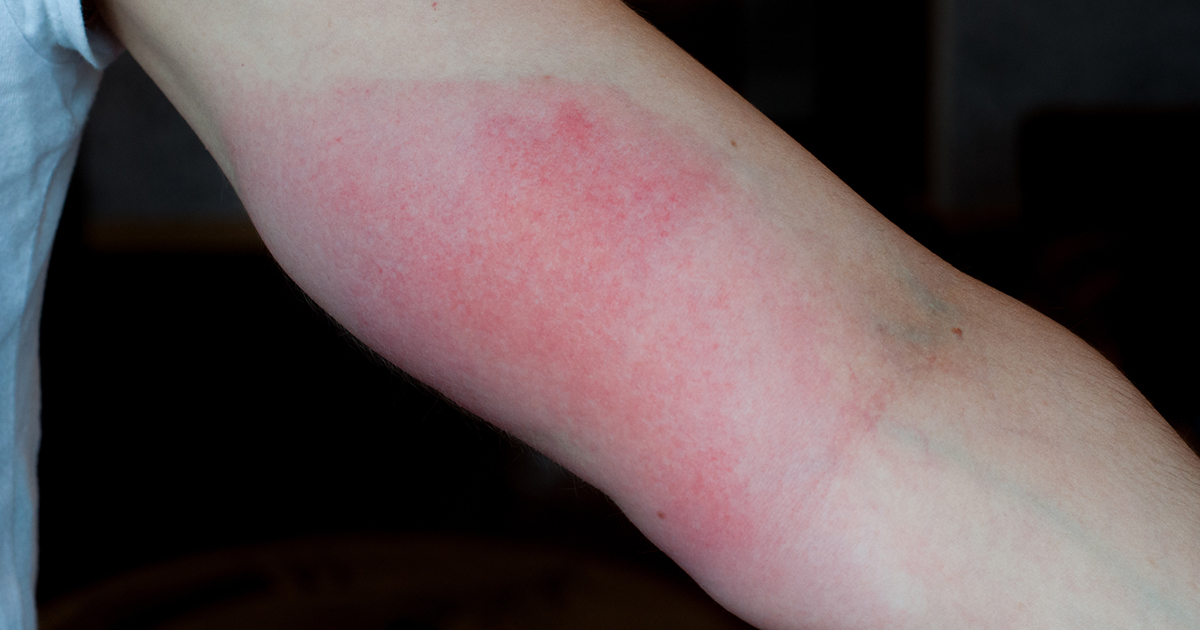Symptoms Of Citrus Burns
Phytophotodermatitis, also called citrus burns, is a type of contact dermatitis. It means your skin develops a rash when it comes into contact with an irritant. Phytophotodermatitis is the least common type of contact dermatitis, and the name gives you an idea of what the irritant is. Phyto refers to a plant and photo is talking about sunlight. When you put those together with dermatitis, you get a rash caused by a reaction from a plant and sunlight. In particular, phytophotodermatitis is caused when UVA rays activate a substance called furocoumarins through photosynthesis. This substance can be found on the surface of plants, which is why simply coming into contact with a plant in sunlight can cause phytophotodermatitis.
Red Skin

Getting red blotches on your skin is one of the more obvious symptoms of phytophotodermatitis. You may look like you have a sunburn, except the redness isn't spread evenly all over your body. It will usually be just in the spots where you were exposed to furocoumarins. Redness usually shows up within thirty-six hours of being exposed to activated furocoumarins, and although it will go away fairly quickly, the redness will turn dark as hyperpigmentation sets in. Individuals with darker skin will probably have dark spots or no spots at all until the hyperpigmentation sets in.
Itchy Skin

Itchy skin is one of the more common ways the body lets someone know something has irritated their skin. It is a symptom of many conditions, including phytophotodermatitis. When you suffer from phytophotodermatitis and have an outbreak, it will itch quite a lot in the affected area after the initial break out. Most patients will probably be tempted to scratch to relieve the itching, but this would just make the itching worse. Itchy skin will accompany the redness and the more a patient scratches, the redder their skin will probably get. The good news is the itching only last a couple days after the initial break out. It should go away or at least ease up after this period.
